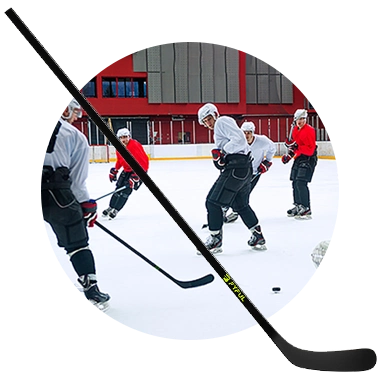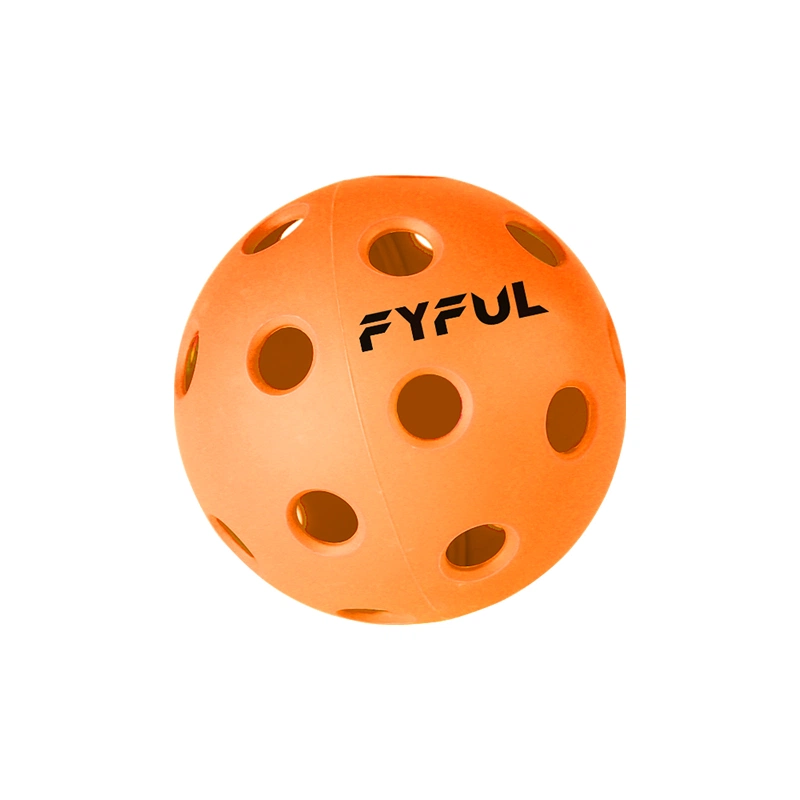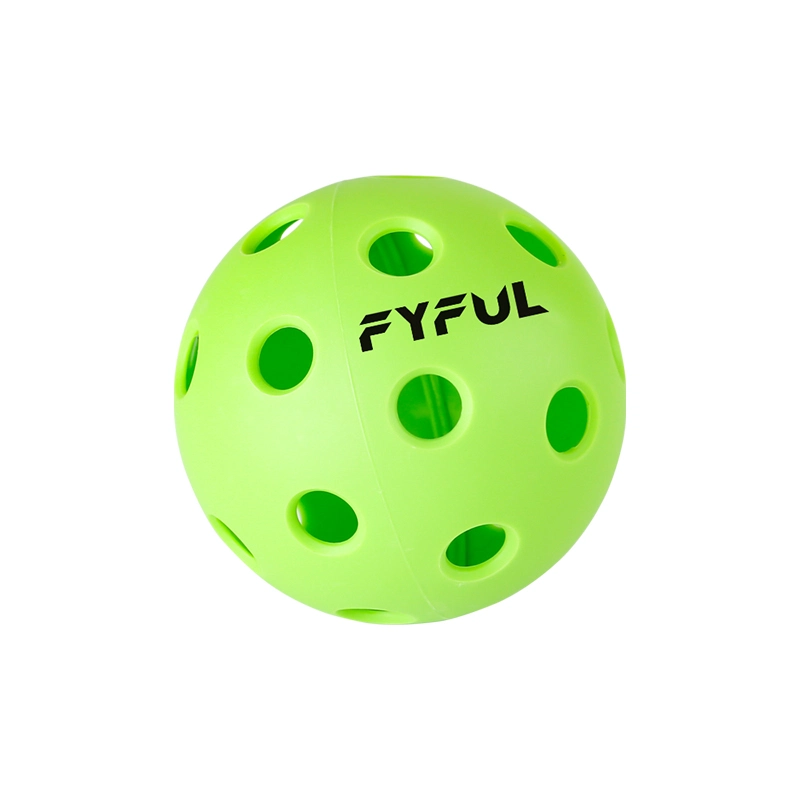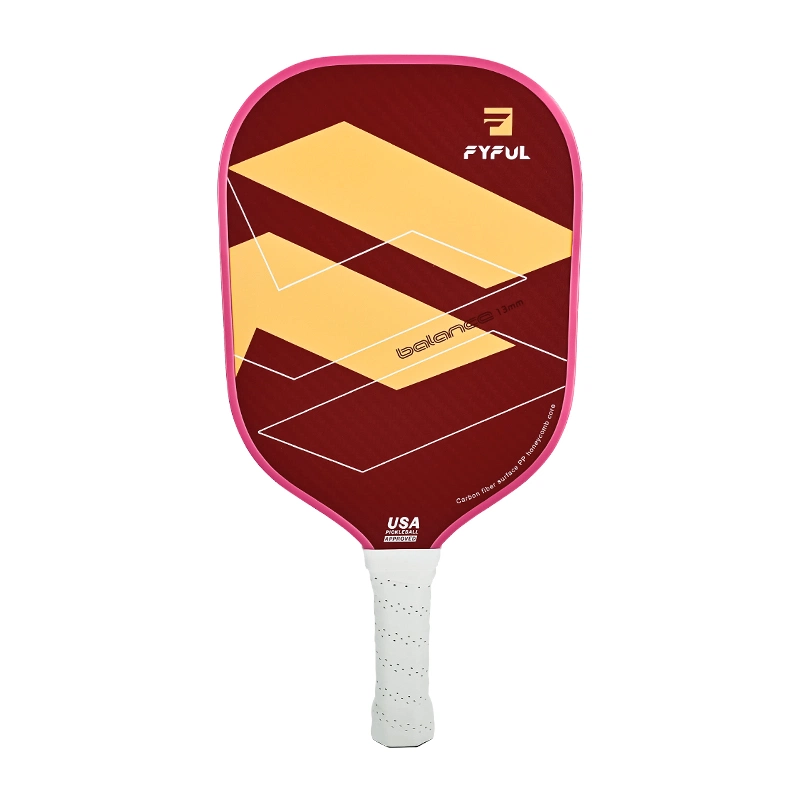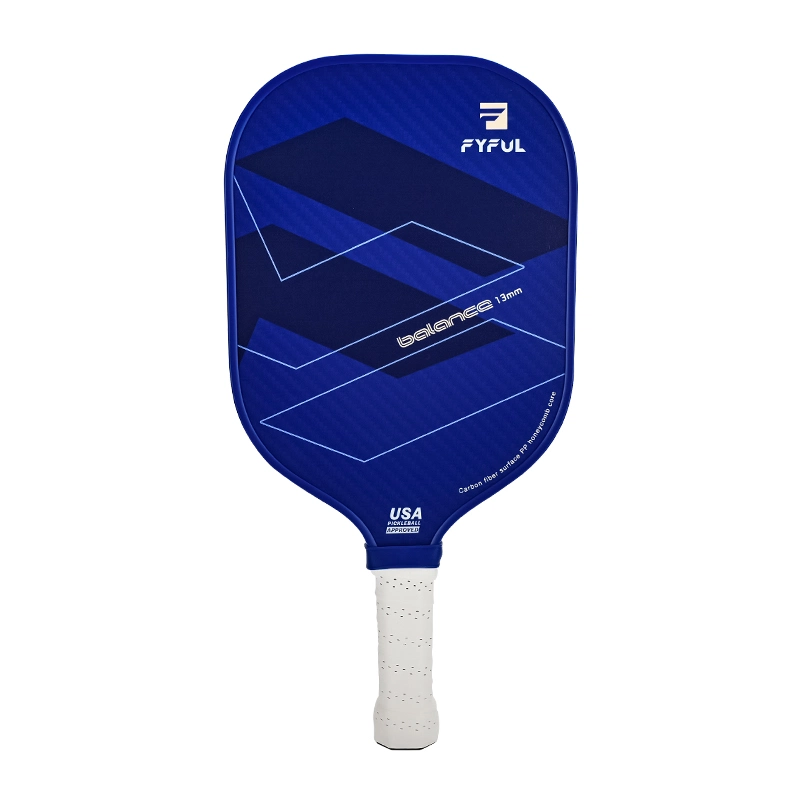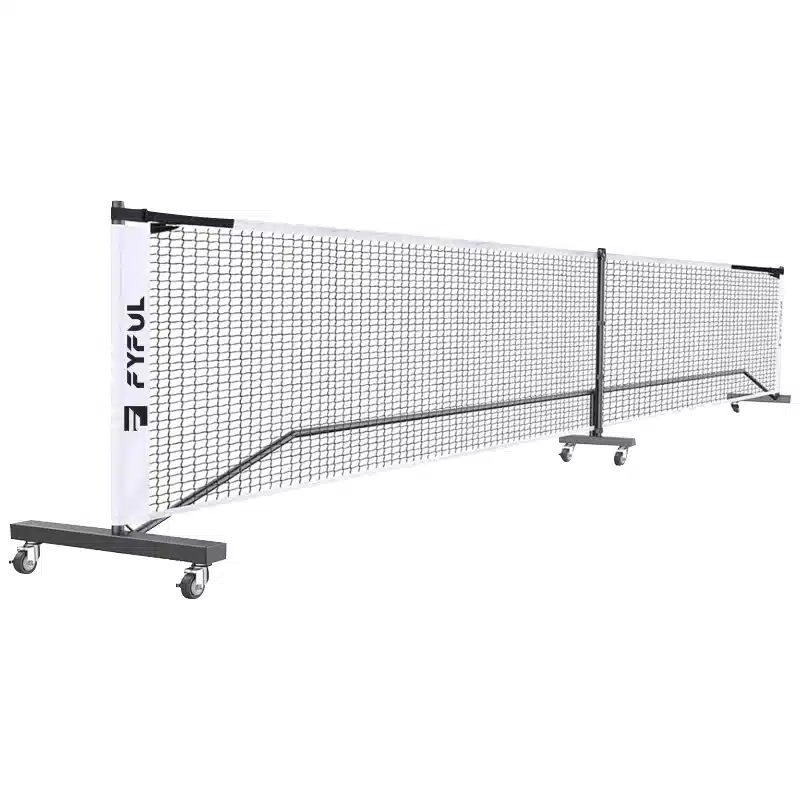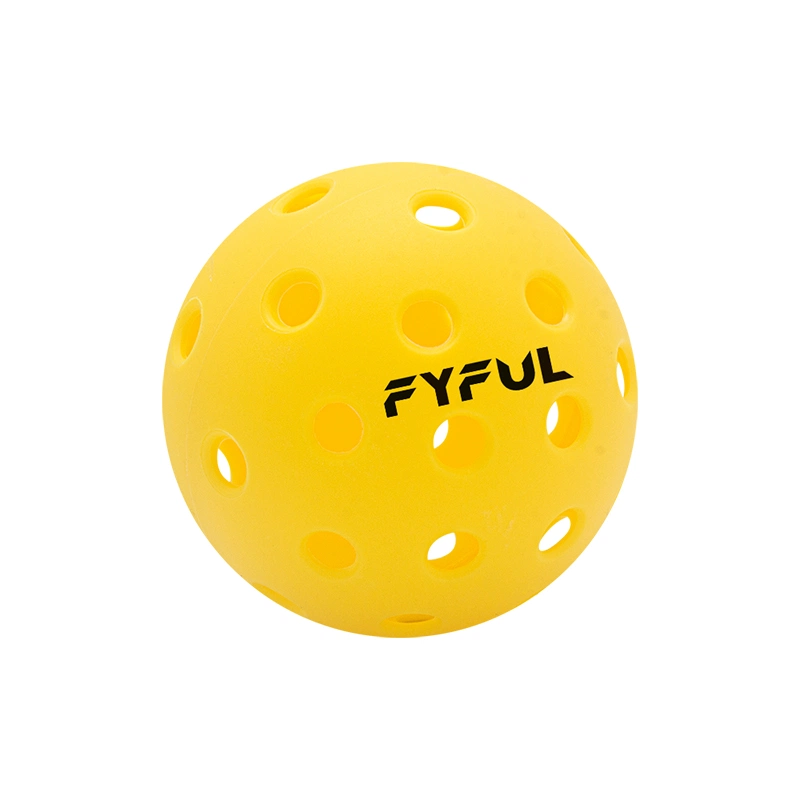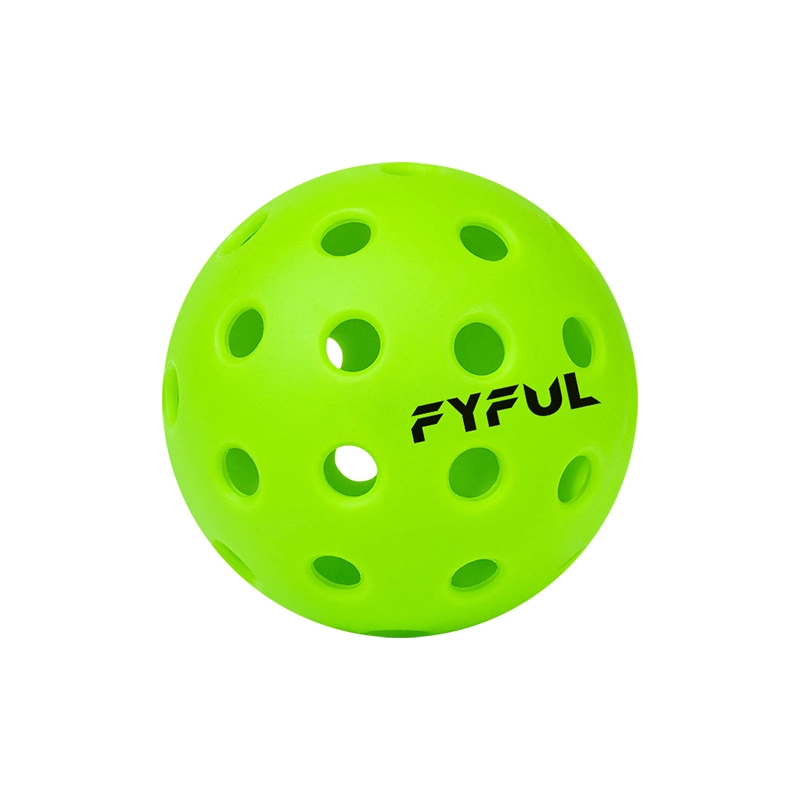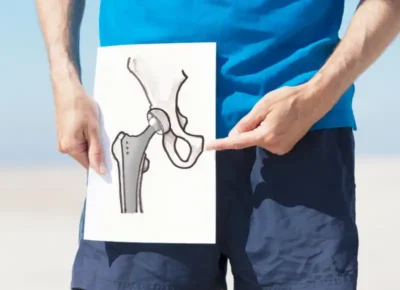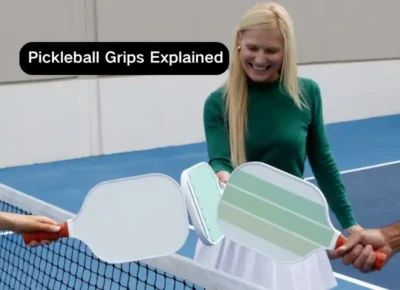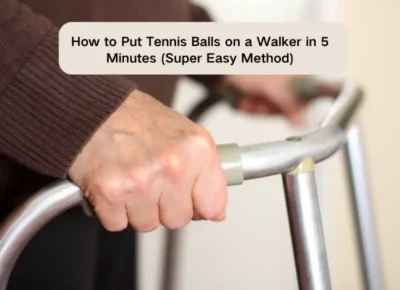Table of Contents
You need to consider certain things before choosing the right Pickleball paddles for you. These things might include thickness, weight, core material, surface, paddle shape, and grip of the paddles. There are different properties of the paddles when it comes to thickness.
The thinner paddle provides a sweet spot and is usually used by players who have precise playing styles and like to maneuver the ball on the field.
In this guide, we will explore the differences between 13mm, 14mm, and 16mm pickleball paddles to help you make an informed decision based on your playing style and preferences.
What is the Core of a Pickleball Paddle?
The core of the pickleball paddle is the material used in the interior of a paddle. This material could contain aluminum, polymer, Nomex, or wood. All of these materials offer different properties and functions.
For example, Aluminum cores are solid and heavier compared to polymer cores and on the other hand, Nomex cores are known for their durability and responsiveness.
The choice of core material can significantly impact the properties of the pickleball paddle, influencing factors such as power, control, weight, and feel.
The professional players often choose a paddle based on their playing style and preferences for these characteristics. The majority of modern pickleball paddles, however, feature polymer cores due to their popularity and versatility.
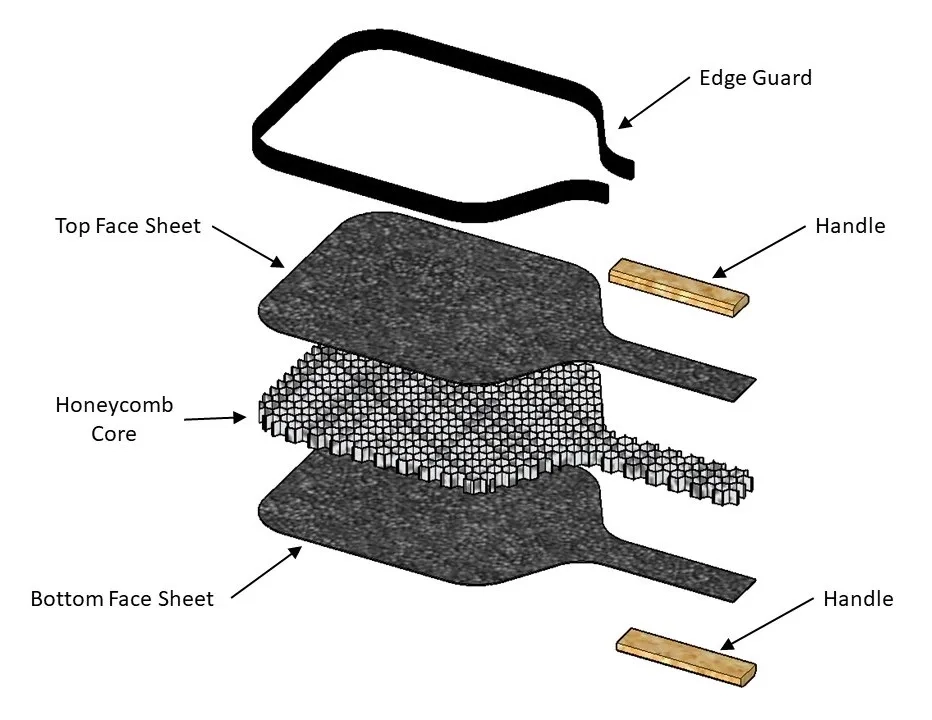
https://www.nycpickleball.com/blog/how-to-find-the-right-paddle-for-your-game
Pickleball Paddle Core Thickness: Does It Matter?
The thickness of the Pickleball paddles matters a lot. Players use different thickness sizes while using a Pickleball paddle.
Thickness offers different advantages while playing pickleball. Few players like to play with a lighter paddle for power and maneuverability.
The others would like to have better control and play defense. So, it is your choice to use a paddle with a certain thickness.
Different Sizes of Pickleball Paddles
13mm Pickleball Paddle
The 13 mm pickleball paddle is thinner and lighter on your hands. It has more power and movement. The paddle’s lesser thickness helps you maneuver the ball in the court.
The smaller head size offers a larger sweet spot, which helps the player to improve their shot accuracy. Due to the less thickness and lightweight paddles, you would be able to get power in your shots, but it will offer less spin to the game.
14mm Pickleball Paddle
14 mm pickleball paddles are usually preferred by pro players with that control and precision. It is easier to handle shots with this paddle when you are facing power shots from your opponents.
15mm-16mm Pickleball Paddle
15mm or 16mm pickleball paddles are considered heavy paddles having a large head size. A larger head size, like a 16 mm paddle, offers control and power. The players who like to play aggressively use this paddle.
Even if you’re defending hits from the opponent, your paddle will always be the sweet spot for the ball to hit back every time. You can place the ball well; control is always there when using a thicker paddle.
So, you are allowed to choose accordingly. There are no restrictions on paddle thickness.
Difference Between 13mm, 14mm and 16mm Pickleball Paddle
13mm or 14mm pickleball paddles fall in the category of lighter paddles, whereas 16mm is a thick paddle. The lighter paddles are used for high speed due to carbon fiber faces.
The hand speed is massively improved when you use lighter paddles. On the other hand, a 16mm core thickness helps in soft games, and the swing speed for these paddles is not bad either.
The surface of these paddles offers a forgiving sweet spot due to its thick core.
Lighter Paddles (13mm or 14mm) typically have more power
The thinner core is always intended to generate more power and provide a good feel to the hand due to its lightweight. A 13mm or 14mm core means you have more maneuverability and power in your paddle. The sweet spot area of the paddle is in the middle and provides a good shot when a little force is used to hit.
Few players love to start with the thinner paddles, and when they get used to them, they use lead tape to increase the head weight of the paddles.
It gives them more control and allows them to play their shots well. As mentioned by the Pickleball Association, there are no restrictions on doing that. There is a restriction on the surface size of the paddle only, and it needs to be followed.
16mm Paddles: Power and Stability
16mm paddles are always about stability, better control, power, and more spin. Although 3mm or 2mm doesn’t look like much of a difference when it comes to the paddle core, it is way too much to change the characteristics of the paddle.
The sweet spot of a thicker paddle is all over the face of the paddle. It provides the same feel when the ball comes in contact with the paddle.
A thicker core (16mm or more) offers more touch
Although the paddle’s weight changes slightly, it doesn’t mean anything to a professional player, as he always aims to hit the ball with control.
So, a thicker paddle, like a 16mm paddle, offers more touch and feels good in your hand. And most importantly, it is easier to go from thicker to thinner paddle than thinner to thicker.
#Comparison Chart
| Aspect | 13mm Paddle | 14mm Paddle | 16mm Paddle |
| Thickness | Thinner and lighter. | Intermediate thickness. | Thicker and heavier. |
| Player Type | Suited for players who prioritize maneuverability and power. | Preferred by pro players for control and precision. | Ideal for aggressive players seeking control and power. |
| Sweet Spot | Larger sweet spot for improved shot accuracy. | Provides control and precision against power shots. | Spacious sweet spot for consistent performance. |
| Spin Potential | Offers less spin due to thinner design. | Balanced spin and control. | More spin and power. |
| Playing Style | Ideal for players looking for power and movement. | Suited for those facing powerful opponent shots. | Suited for aggressive play with emphasis on control. |
| Weight | Lighter for increased hand speed. | Moderate weight for a balance of power and control. | Heavier, offering stability and control. |
| Maneuverability | High due to lighter construction. | Balanced maneuverability. | May feel slightly less maneuverable. |
| Core Material | Can vary, often includes carbon fiber. | Various materials, including carbon fiber. | May include carbon fiber and other reinforced materials. |
| Touch and Feel | Good feel with lightweight design. | Provides a good balance of touch and feel. | More touch, feels solid in hand. |
| Adjustability | Players can add lead tape for more head weight. | Moderate adjustability with tape. | Limited adjustability due to thickness. |
| Ideal For | Players who value maneuverability and power. | Pro players seeking control and precision. | Aggressive players looking for power and control. |
| Restrictions | No restrictions on thickness. Surface size must comply with regulations. | No restrictions on thickness. Surface size must comply with regulations. | No restrictions on thickness. Surface size must comply with regulations. |
Which is the Best Thickness for a Pickleball Paddle?
If you want to start your journey to play pickleball, you may like to use lighter paddles with a 14mm thickness to hit the ball with power and be used to it. The game needs control as the court size is smaller, so you can’t over-hit the ball. The ball used in pickleball is also lightweight, so you must also manage your shots.
When you get into the sense of the game, you might like to play with thicker paddles. As a professional player, you look to play with different techniques and ideas, so a thicker paddle, about 16mm in thickness, is preferred. You like to hit and place the ball precisely across the opponent’s side; that’s what a heavier paddle offers.
So, when it comes to the thickness of the paddle, you need to see your style of play. Both thicker and thinner paddles offer multiple advantages. Pick your paddles wisely and buy the best ones available for maximum output.
The Importance of Weight in Pickleball Paddles
The weight of the pickleball paddle varies when its thickness changes. These paddles may weigh between 7.3 and 8.3 ounces. A 7.3-ounce paddle is considered a lightweight paddle that most beginners like to choose, whereas an 8.3-ounce paddle is a little heavier and used by professionals.
The weight of a pickleball paddle is paramount in influencing a player’s performance on the court. A well-balanced paddle enhances control, maneuverability, and overall playability.
Lighter paddles are often favored for their agility and quick response, aiding players in swift reactions and net play. Advanced players like to pay with lighter paddles for a bit longer to gain shot strength.
On the other hand, heavier paddles can provide additional power and stability, assisting in powerful shots and baseline play. Striking the right balance between weight and playing style is crucial for players to maximize their effectiveness and comfort during matches.
Core Material of Pickleball Paddles
We have discussed about the thickness of the pickleball paddle, let’s talk about the core material for the paddles.
Four types of core materials are used in a pickleball racket: Wood, Aluminum, Nomex, and polymer. Wood as a core material was used at the start of the times, but it is no longer used in good-quality paddles.

https://www.nycpickleball.com/blog/how-to-find-the-right-paddle-for-your-game
Aluminum
Aluminum Paddles were used a few years ago, and now they are not used anymore. The purpose of aluminum was to reduce the weight of the paddles as it has some lightweight properties. But it was louder to play with aluminum paddles, so the idea of building such paddles was dropped.
Nomex
Nomex is another good core material used to build Pickleball paddles. It provides great power and control. It lacks feel and touch; however, it is being used nowadays. Few manufacturers also use Nomex as a sandwich material. You can have it if you think it could be the right paddle.
Polymer PP
Polymer PP is used in most paddles nowadays. Polymer has proved to be the best and premium core for pickleball paddles, which are usually known for big swings.
The standard-weight paddles use polymer as a core material and are available in the pickleball market. The carbon core or graphite core paddles are also made with such methodologies.
Wood
Wood cores are traditional and provide a solid and natural feel. Paddles with wood cores are generally heavier than those with polymer or Nomex cores.
They are preferred by some players for their classic feel and responsiveness, but they may lack some of the advanced features of modern composite materials.
Bottom Line
This guide has discussed the difference between 13mm, 14mm, and 16mm paddles. The value of the paddles’ weights could not be neglected, either. The thickness of a pickleball paddle plays a crucial role in determining its performance on the court.
While thicker paddles may offer increased power and stability, thinner ones often provide more control and maneuverability.
Ultimately, the ideal thickness depends on individual preferences and skill levels, highlighting the importance of selecting a paddle that aligns with one’s specific needs for an optimal playing experience. Check the paddle’s quality before buying one and choose according to your needs.
Related Post: A Beginner’s Guide: How to Choose a Pickleball Paddle



